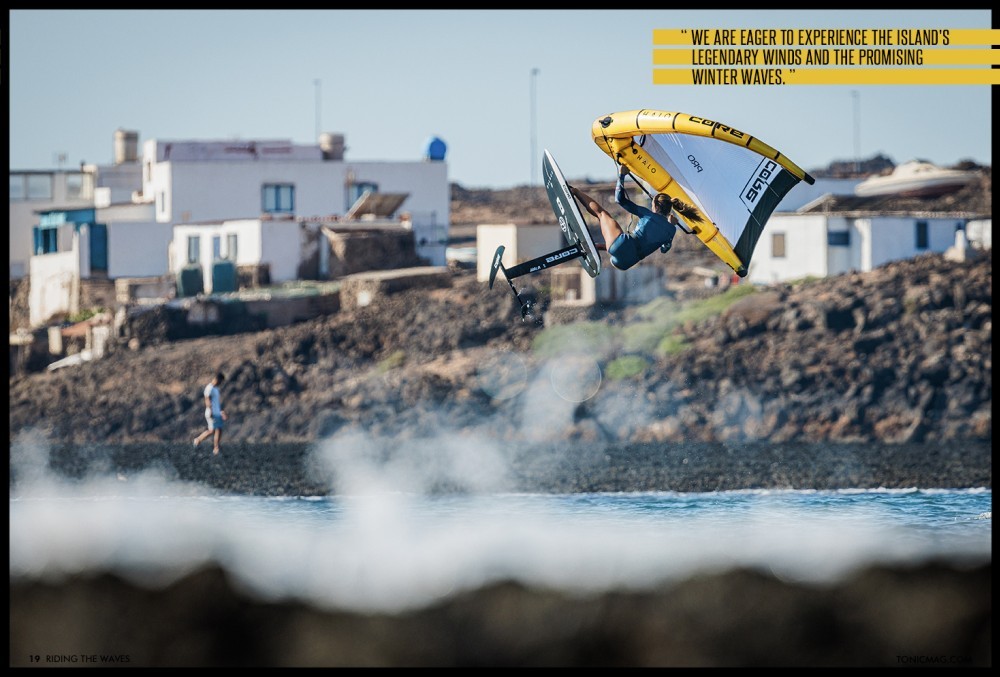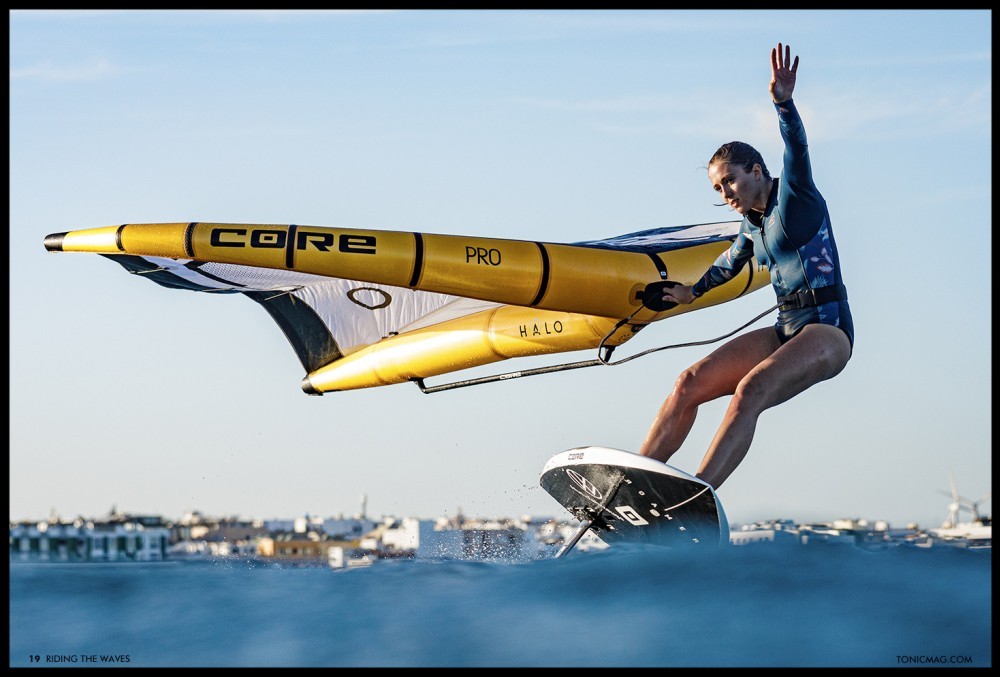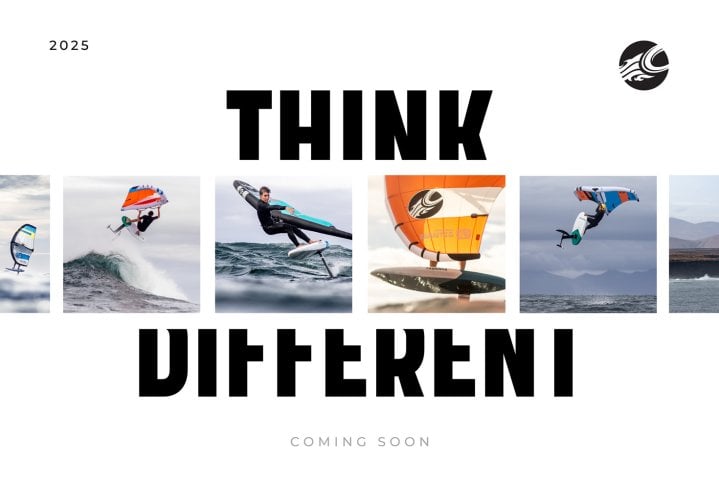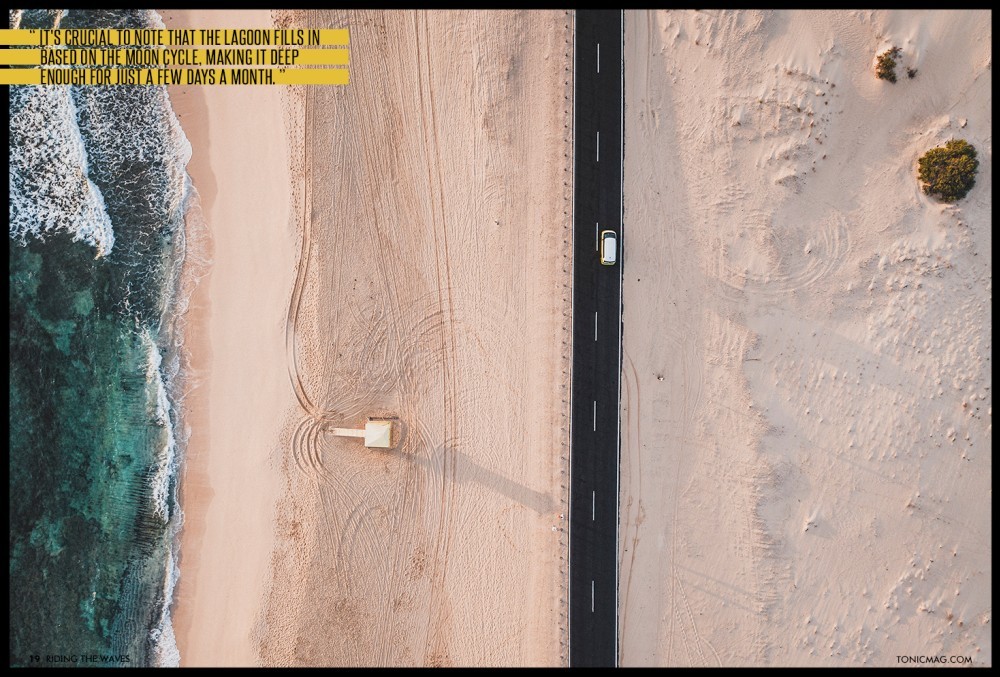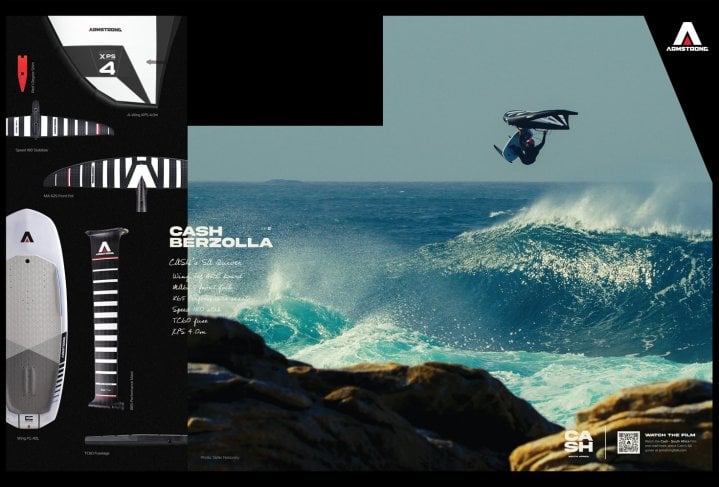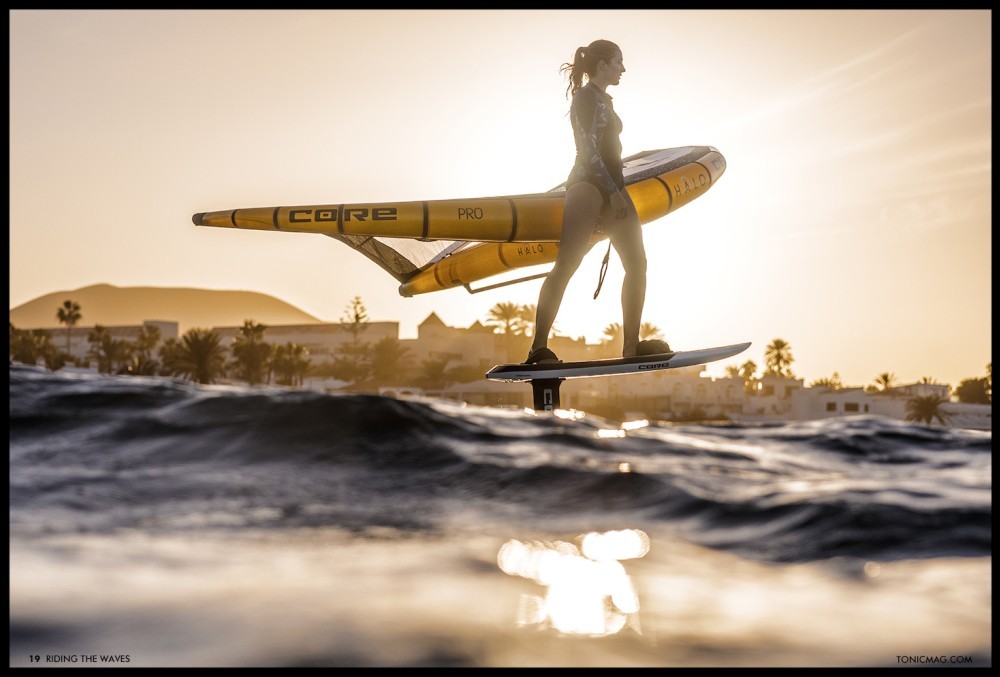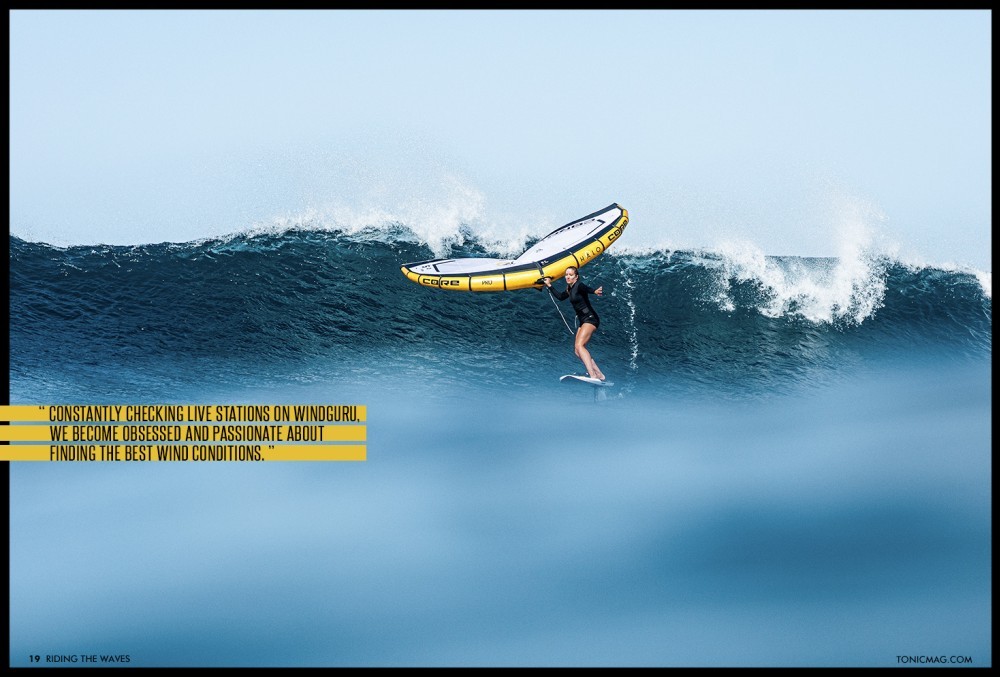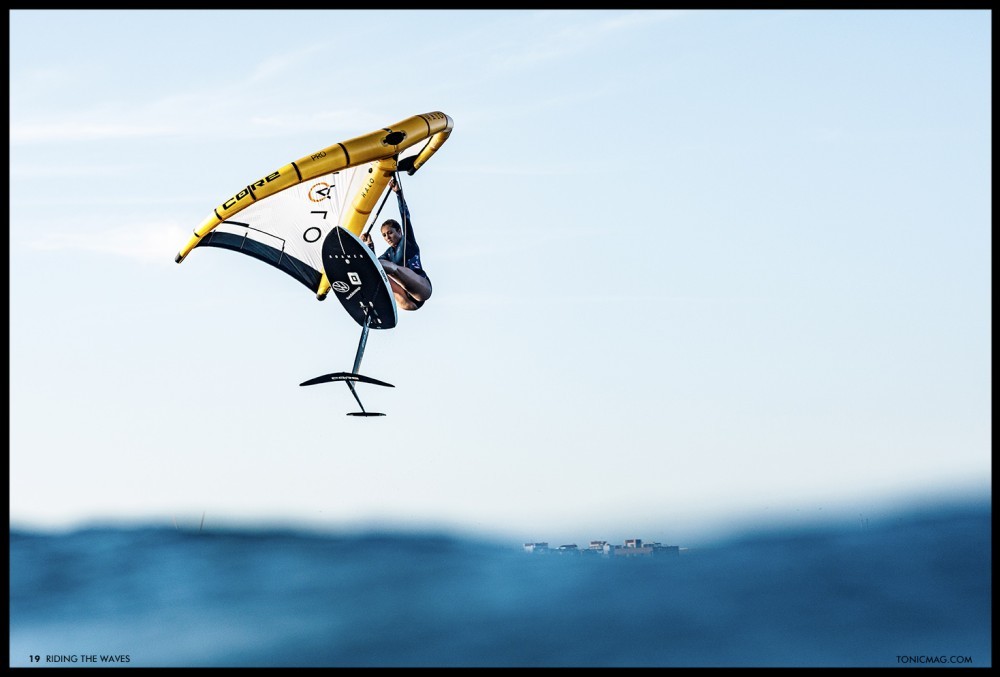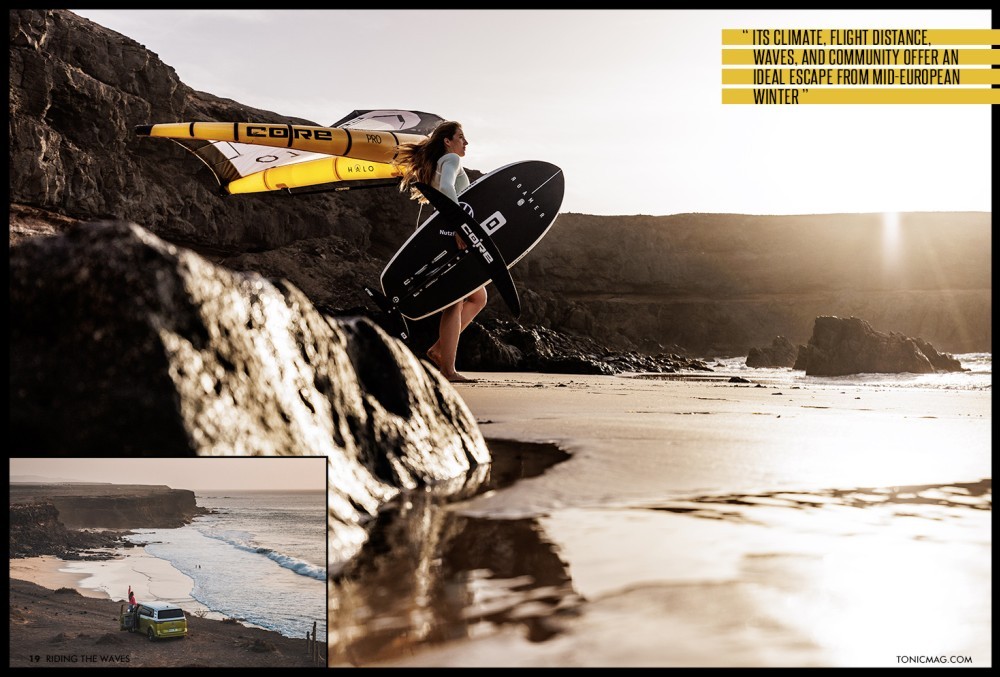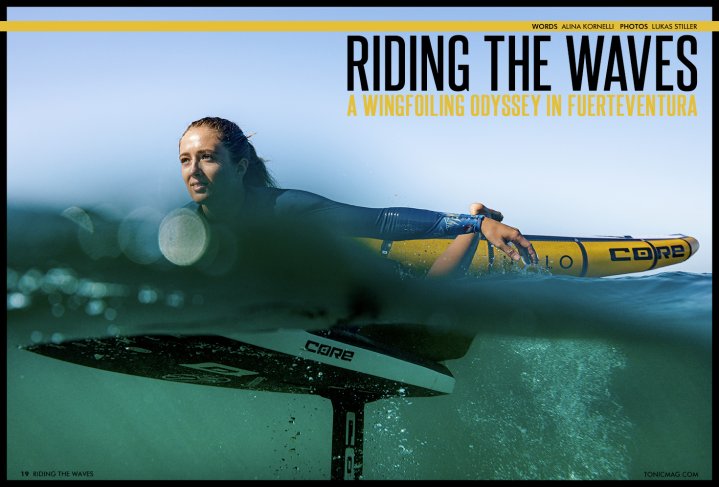
Riding the Waves: A Wingfoiling Odyssey in Fuerteventura
Issue 19 / Mon 26th Feb, 2024
Hit the road with Alina Kornelli and Lukas Stiller as they share the challenges and triumphs of their week-long adventure as they navigate the Fuerteventura’s fickle winter winds, seeking the perfect conditions for wingfoiling and capturing unforgettable moments amidst the island's unpredictable climate - Read ‘Riding the Waves: A Wingfoiling Odyssey in Fuerteventura’ exclusively in Tonic Mag!
Fuerteventura, the second largest island in the Canary Islands, is the ultimate haven for anyone seeking an adrenaline rush through any watersports activity. Fuerteventura itself alludes to the island's primary claim to fame - the strong winds that embrace its shores, making it an ideal location for activities like wingfoiling.
As I venture into this wind-swept paradise in mid-November, I am excited to meet my photographer and good friend, Lukas Stiller, at Fuerteventura Airport. We are eager to experience the island's legendary winds and the promising winter waves. While the prime wind season on Fuerteventura typically occurs during the summer, the swell appears more promising during the winter. The wind conditions of the past two weeks have been nothing short of impressive, with videos from local friends showcasing wingfoiling the massive swells along the north shore with wind speeds reaching up to 22 knots.
Arriving at Puerto del Rosario Airport in the late afternoon, we catch a glimpse of wingfoilers enjoying the nearby spot, "Puerto Lajas," from the plane. Although tempted to set up our gear at that spot on our way to the Airbnb up north, reality sets in as we complete our luggage and car preparations just as the sun dips below the horizon, reminding us of the shorter winter days!
Fuerteventura presents a paradox - a seemingly monotonous volcanic island with a dry landscape, yet it offers a diverse range of wingfoil spots and beaches with varying terrains. It's essential to note that it takes a maximum of two hours to travel from the very North to the South by car and about 30 minutes to one hour from the West coast to the East.
There's a range of famous spots, starting from the northern town of "Corralejo," featuring a flat water winging spot at the city beach inside the bay, to the renowned "Flag Beach" in the northeast, known for its choppy open sea and ideal beginner-friendly conditions. Additionally, there are hidden gems like the rocky north shore near "Majanicho" (advanced spots) and the surfer's haven, "El Cotillo" Bay.
Heading south along the East Coast, "Puerto Lajas" near the airport and the iconic "Sotavento" lagoon offer contrasting experiences. However, it's crucial to note that the lagoon fills in based on the moon cycle, making it deep enough for just a few days a month.
While typically expecting northeast wind during the winter months, navigating the island's winds proves to be a puzzle, with varying directions, local thermals, and unpredictable changes from spot to spot. Wind conditions can differ dramatically within a short drive, emphasising the need to chase the wind in our cars with the gear ready to be utilised within 5 minutes after arrival.
Our week-long adventure begins with a missed afternoon session on arrival day, setting the stage for uncertainty. Initially, we face disappointment as forecasts from Windguru and Windfinder, coupled with local insights, hint at a less-than-ideal week - the wind seems to have disappeared just as we arrived!
After six years of contests and photo shoots, encountering this setback leads to an exciting realisation. The absence of competitions and camera stress often provides the most epic conditions and moments, leading to unforgettable sessions with friends. While we are here to capture and share these experiences in the media, we embrace the challenge of the Islas Canarias and aim to make the most out of every little opportunity.
Fuerteventura's webcams and wind stations become vital resources, while locals sharing real-time spot details provide hope in challenging forecasts. Constantly checking live stations on Windguru, we become obsessed and passionate about finding the best wind conditions.
Choosing the opportune moment on a day with a good forecasted swell at the northern spot, "Majanicho," we aimed for epic wave-winging pictures. Lukas prepared his expensive camera with the matching water housing and donned his wetsuit, fins, and neon yellow helmet, venturing into the swell.
Meanwhile, I navigated the rocky reef barefoot during low tide, carrying my 5.0 wing and 45-litre wing foil board with an 850 front wing to the water's edge. Paddling out into the waves, I embraced the wind at about 8 knots!
While on the foil, I realised my dislike of using board leashes, a decision reconsidered in the breaking waves. As it was low tide, I would get washed into the reef after a crash. A new foil set added to the challenge as I adapted to its new feel with a guessed-right mast position. Despite the challenges, surviving the sets left us excited, with some great shots captured safely back at the rocky beach without a scratch on us or our equipment.
This day became the blueprint for further sessions during the week, where challenges tested my riding skills and Lukas's photography finesse.
Fuerteventura in winter is an unpredictable companion - its climate, flight distance, waves, and community offer an ideal escape from mid-European winter, provided the wind favours your adventure. Despite this, my sights are set on a return during the summer months, anticipating better wind conditions for another chapter in our Fuerteventura wingfoiling saga, hoping then for the opposite - a swell in summer with a higher chance of windy days!
By Alina Kornelli




